Rare Roman paintings depicting mythological characters unearthed in Pompeii 2,000 years after volcanic eruption

Archaeologists discovered rare paintings, showing Helen of Troy and other Greek figures, in the lost Roman city of Pompeii 2000 years after the deadly volcanic eruption.
The paintings were revealed on Thursday after archaeologists uncovered them from a “spectacular dining room” that featured “black walls,” a press release from Pompeii’s Archaeological site.
A standout work of art captured amongst the frescoes was the Helen of Troy, considered by Greeks as the most beautiful woman in the world, introducing herself to Paris, Prince of Troy.
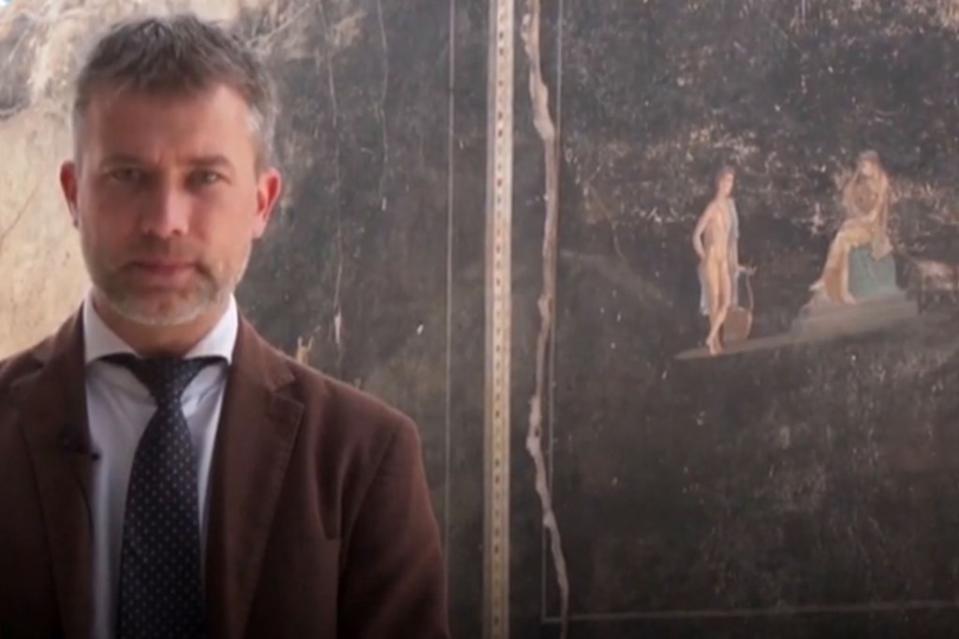
Helen, the wife of Menelaus (the king of Sparta), would end up having an affair with Paris that caused the well-known Trojan War.
The room’s black walls where the frescoes were found had been coated in black paint to avoid oil lamps being visible on the walls, Gabriel Zuchtriegel, director of the Archaeological Park of Pompeii said.
He added the paintings on the walls would create an illusion that “the images appear to move.”
Frescoes are painted water-based pigments on plaster — used heavily in Roman times.
Archaeologists noted the black-wall dining room had been used for entertainment purposes and other banquet-like events
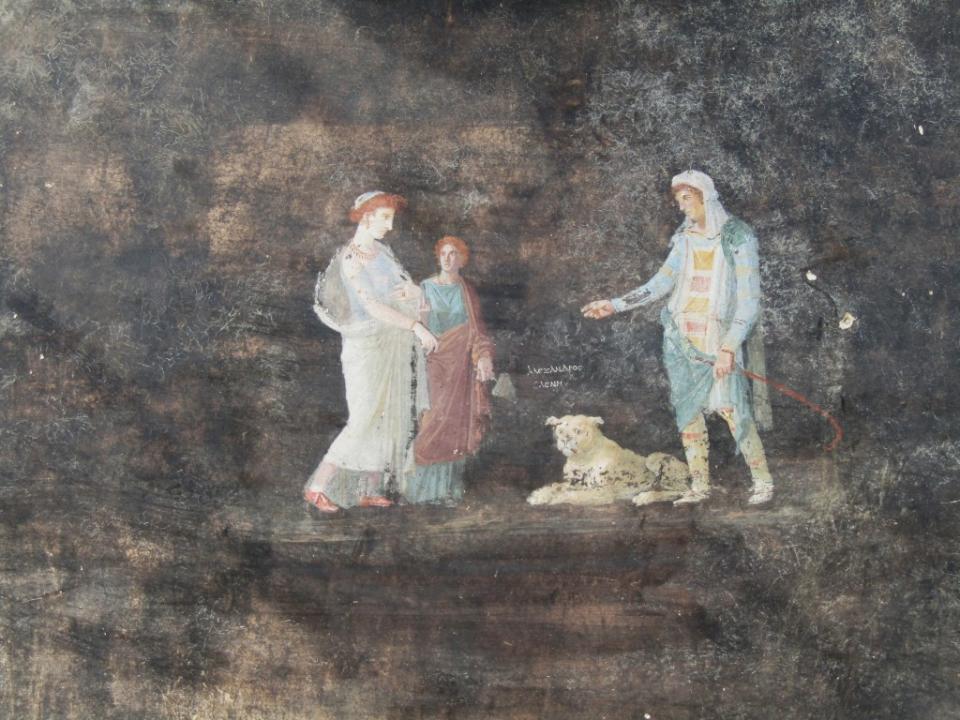
“It provided a refined setting for entertainment during convivial moments, whether banquets or conversations, with the clear aim of pursuing an elegant lifestyle, reflected by the size of the space, the presence of frescoes and mosaics dating to the Third Style,” they said.
Another painting on the dining room walls shows Cassandra, daughter of Palm, and Apollo together. The frescoe depicts a naked Apollo with a blue-colored garb over his shoulder revealing himself in front of Cassandra.
Cassandra was a known fortune teller who was believed to have been cursed by Apollo because she refused to give herself to him.
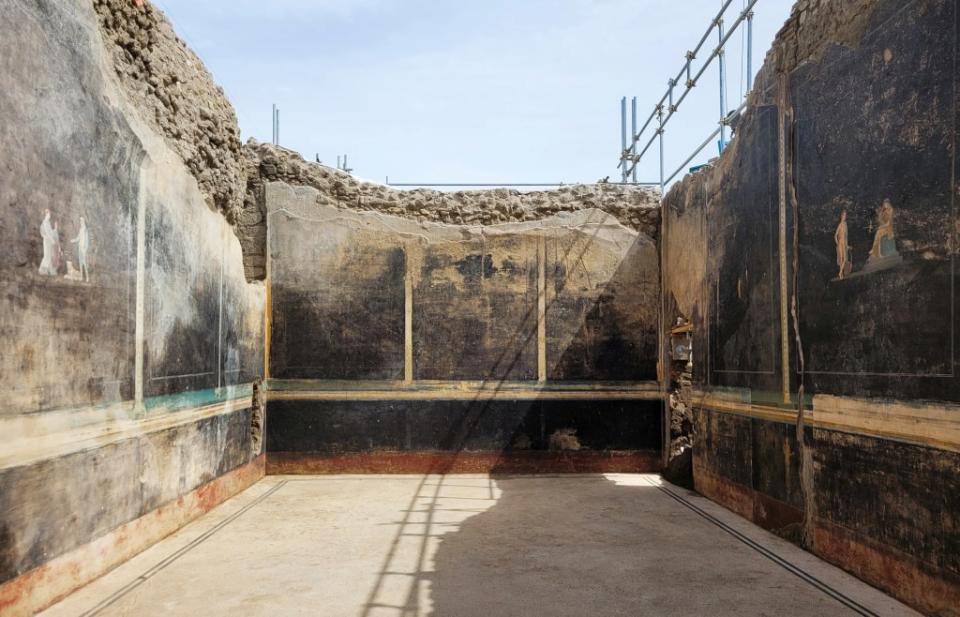
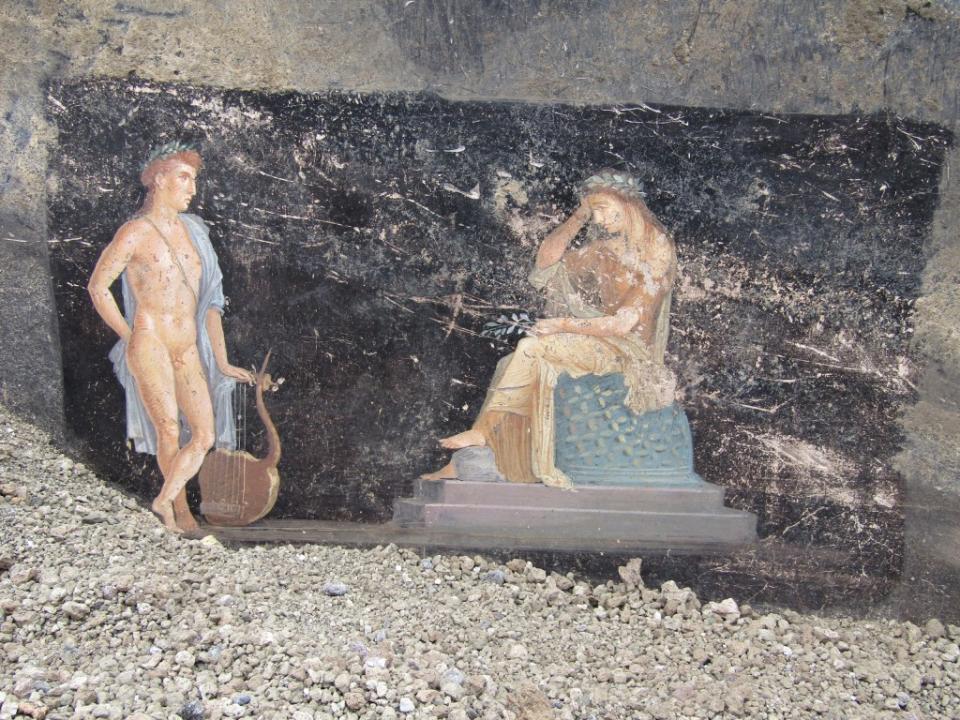
The lost city of Pompeii, now an archaeological site in Italy’s southern region, was used as a resort by Rome’s high class until Mount Vesuvius’s volcanic eruption buried it entirely ash in 79 AD.
Pompeii had been buried under volcanic rubble for well over a millennium until ruins from the catastrophic event were re-discovered in the late 16th century by architect Domenico Fontana.
The frescoes are just the latest discovery around the historical Pompeii site.
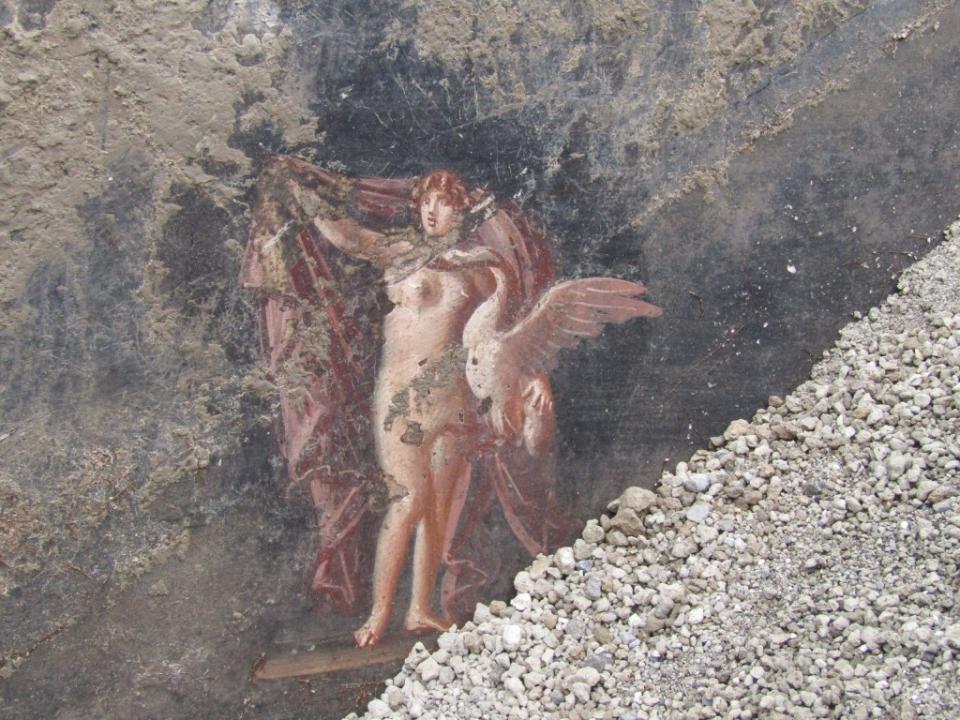
Italian archaeologists venturing into Pompeii uncovered another 2,000-year-old painting that looked like a modern-day pizza in June 2023.
The fresco was dug up from volcanic ash in the Regio IX section of Pompeii’s Archeological Park.
Ruled out as the modern-day food many Americans love to eat, the painting of the flatbread-like figure was theorized as a possible ancestor of pizza.

